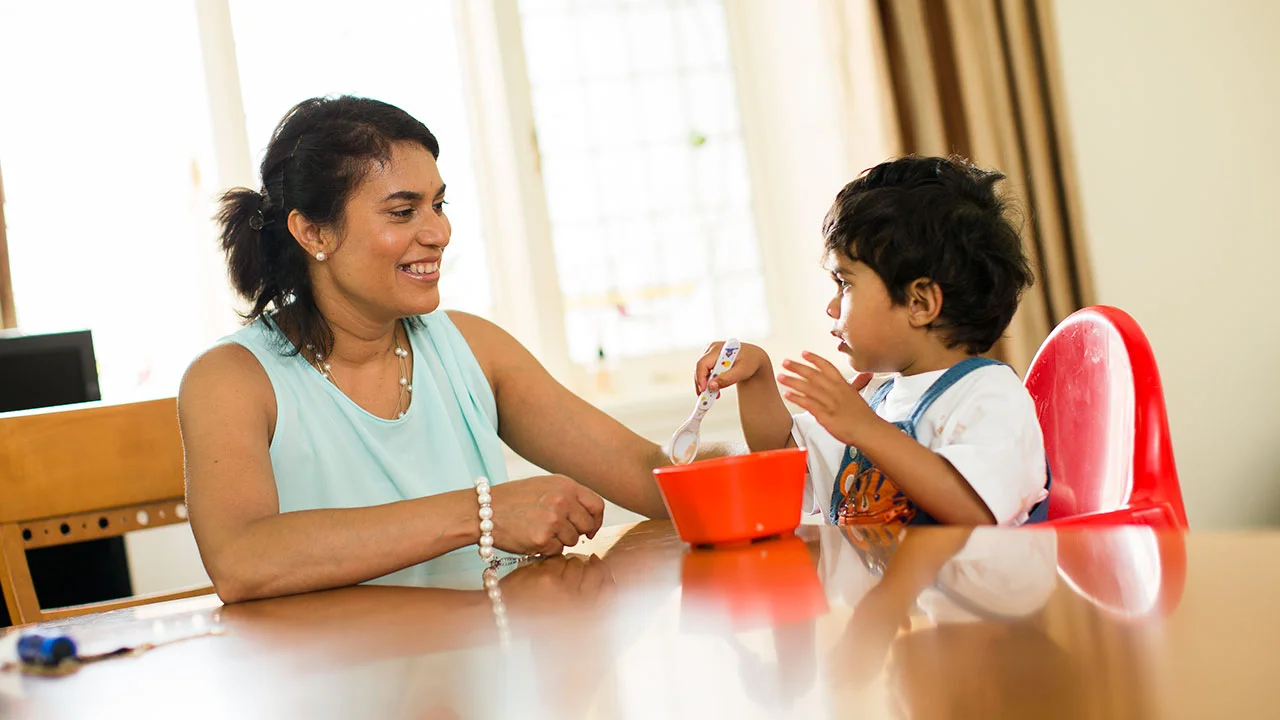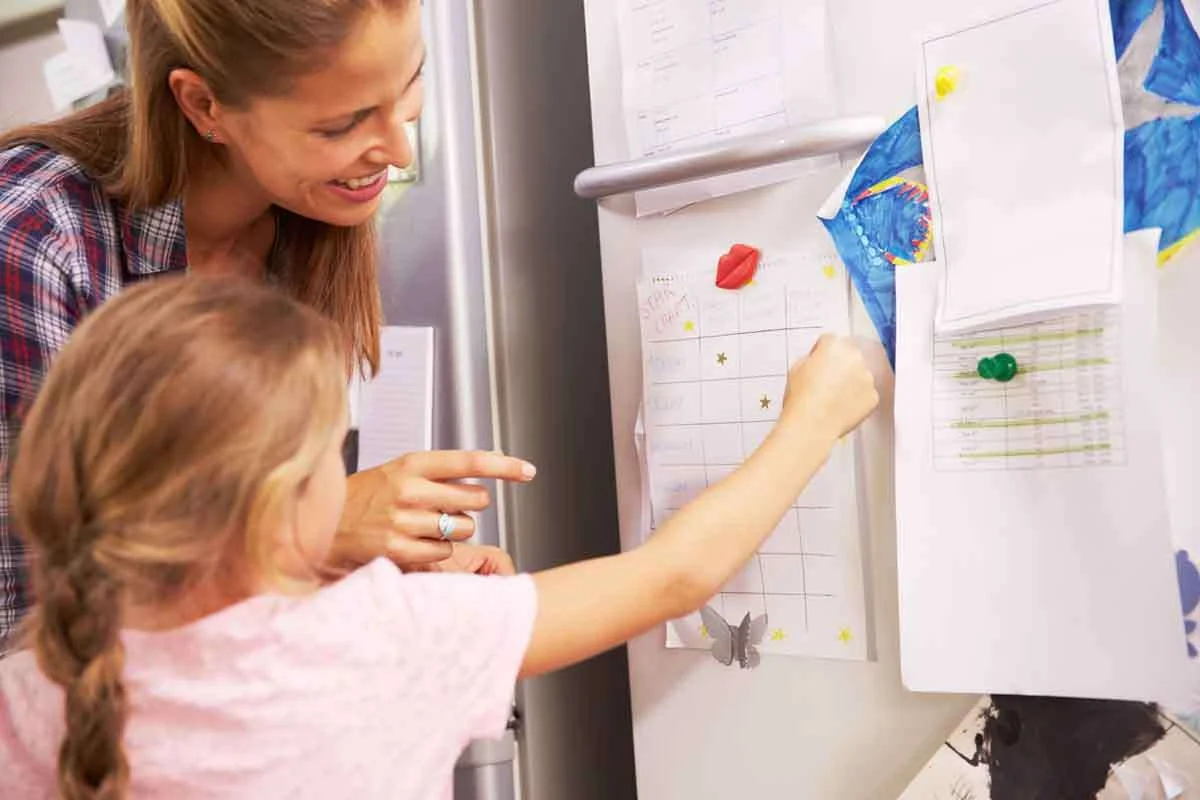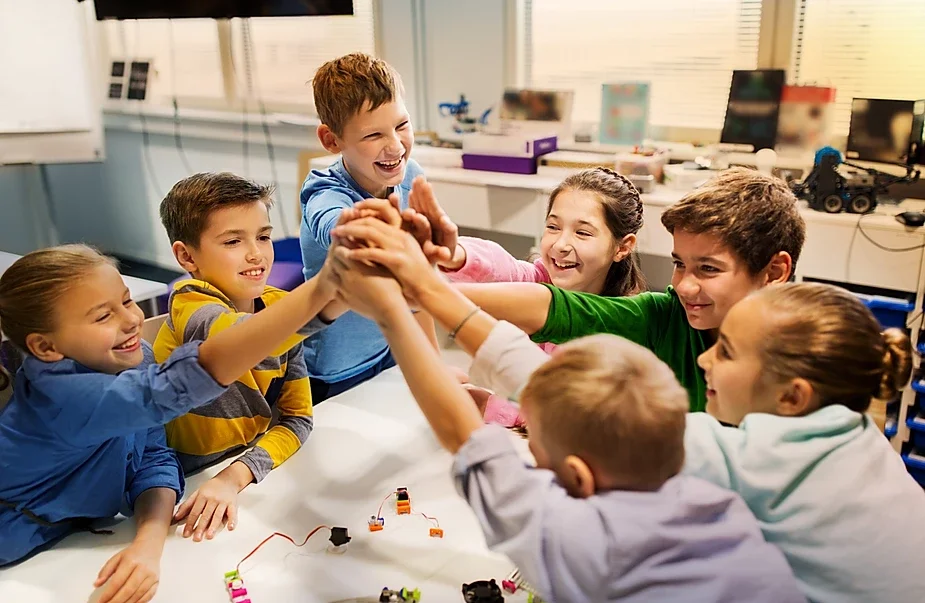
Picture this: You’ve had a long day at work, you’re exhausted, and all you want to do is crash on the couch. When you arrive home and are greeted by your children eager to share their stories or discuss their problems, it’s an opportunity for positive parenting. Taking the time to engage with them, even if it’s just for an hour, can make a big difference. Instead of seeing it as a chore, consider it a chance to connect and strengthen your relationship with your children.
Positive parenting involves being present and attentive to your children’s needs and emotions, which can lead to a more fulfilling and harmonious family life. Parenting is like a rollercoaster ride filled with highs, lows, and everything in between.
As parents, you must often find yourselves wondering if you’re doing it right if you’re doing enough, and if you’re truly connecting with your children and this is where being positive would lead the way.
Let’s explore the incredible power and art of positive parenting:
History
Before Alfred Adler was an Austrian medical doctor, and psychotherapist, it was believed that children should be seen and not heard. He defied societal norms and asserted children deserve to be treated with dignity and respect. This led to positive parenting, which underlines parents to be both compassionate and firm.
Essentials of Positive Parenting
1. Builds Emotional Connection between parents and kid
Parents should validate their child’s feelings, creating a safe space for them to express themselves. Through bonding activities and quality time spent together, trust and understanding between parent and child can become stronger.


2. Clear & Open Talk
It’s difficult, but clear and open communication is a must. Actively listen to your children’s thoughts and feelings without judgment. And through regular conversations and problem-solving discussions, trust and transparency are nurtured.
3. Consistency and Boundaries
Consistency helps children feel secure and understand what is expected of them. When they need you, make sure you are available. Also, by working together as a team, you should ensure that rules and consequences are applied consistently, building a sense of fairness and predictability for children.


4. Practicing Positive Reinforcement
Instead of focusing on punishment, positive parenting relies on positive reinforcement to encourage desired behaviors or even small wins, with praise, rewards, and encouragement.
5. Teaching them Problem-Solving Skills
This can be challenging, but it’s a skill that can benefit you and your children for a lifetime. Positive parenting is also about teaching kids problem-solving skills through guidance in identifying challenges, brainstorming solutions, and considering consequences. Parents support their children’s critical thinking and decision-making, empowering them to tackle challenges independently and build resilience.

Benefits of Positive Parenting
Stronger Bond: Positive parenting strengthens the relationship between parents and children, creating a secure attachment that fosters trust and mutual respect.
Improved Behavior: Children raised in a positive environment tend to exhibit better behavior, as they feel motivated to cooperate and please their parents.
Enhanced Emotional Well-being: By nurturing their emotional needs, positive parenting helps children develop healthy self-esteem and emotional resilience, equipping them to navigate life’s challenges.
Positive Outlook on Life: It instills optimism and confidence in children, empowering them to approach life with a positive attitude and a growth mindset.
Recommended Reading: Coping Mechanisms in the Digital Age: Guide to Emotional Wellness
The Power of Positive Parenting
Transformative Influence:
An environment of love, support, and understanding has the power to transform families. Everyone thrives in such a constructive family ecosystem.
Cycle of Positivity:
Positive parenting creates a ripple effect, inspiring children to emulate the same nurturing and supportive approach when they become parents themselves, thus perpetuating a cycle of positivity across generations.
Power Building
By nurturing their emotional well-being and teaching them valuable life skills, positive parenting equips children with the emotional intelligence they need to face life’s challenges without buckling under pressure.
Lifelong Learnings
The effects of positive parenting extend far beyond childhood, shaping children into compassionate, confident adults who are capable of forming healthy relationships and contributing positively to society.
CREATE JOY- Ways to provide positive parenting
Through the concept of Create Joy, we will try to tell you about the essence of positive parenting, focusing on nurturing a loving and supportive environment within the family dynamic. It revolves around creating a space where each family member feels valued, respected, and understood, fostering a sense of security and belonging.
C- Create a Safe and Supportive Environment:
Make your home a safe and cozy place where children feel loved, secure, and cared for.
Example: Indulge in family movie nights where you all snuggle up on the couch with blankets and popcorn, laughing together and enjoying each other’s company.
R- Recognize and Respect Boundaries:
Set clear rules and boundaries for behavior, and ensure to respect your child’s boundaries too.
Example: Let your child know that they have the right to privacy by knocking on their bedroom door before entering, just like you would want them to respect your privacy.
E- Engage in Positive Communication:
Talk to your child in a kind and respectful way, and listen carefully when they talk to you.
Example: When your child tells you about their day, put down your phone, look them in the eye, and really listen. Show that you care about what they have to say.
A- Act as a Positive Role Model:
Show your child how to be kind, patient, and respectful by being a good example yourself.
Example: If you want your child to be polite, make sure you say “please” and “thank you” yourself, even when you’re talking to them.
T- Teach Problem-Solving Skills:
Help your child learn how to solve problems on their own by talking through solutions together.
Example: If your child is upset because they can’t find their favorite toy, ask them questions like, “Where did you last see it?” or “Have you checked under your bed?” to help them think of solutions.
Recommended Reading: 10 WAYS HOW TO RAISE A PROBLEM-SOLVER KID AND TEACH PROBLEM-SOLVING SKILLS
E- Encourage Autonomy and Responsibility:
Give your child opportunities to make their own choices and take on responsibilities.
Example: Let your child choose what they want to wear to school, even if it’s not what you would pick. This helps them feel independent and confident in their decisions.
J- Join in Quality Time Together:
Spend special time with your child doing activities you both enjoy.
Example: Take a nature walk together and collect leaves or rocks, then come home and make a craft with your findings. This creates fun memories and strengthens your bond.
O- Offer Praise and Encouragement:
Notice when your child does something good and praise them for it.
Example: If your child helps set the table without being asked, say something like, “Wow, I appreciate your help! It makes me happy to see you being so responsible.”
Y- Yield to Active Listening:
Listen to your child without interrupting or judging, and show that you understand their feelings.
Example: If your child is upset because they didn’t get invited to a birthday party, say something like, “I can see why you’re feeling sad. It’s okay to feel that way, and I’m here for you.”
Conclusion
Positive parenting isn’t about being a perfect parent; it’s about creating a positive environment where your child can thrive emotionally, socially, and intellectually. By embracing the principles of unconditional love, effective communication, and setting realistic expectations, you can harness the power of positive parenting to build a strong, nurturing relationship with your child that will last a lifetime. In the upcoming blogs, we will delve deeper into specific strategies and techniques to help you become a more positive and effective parent.
Looking for a comprehensive parenting guide to ensure you are on the right track? Explore a wealth of parenting wisdom and educational insights in Moonpreneur’s blogs. Additionally, you can join our programs that nurture the next generation of innovators. Book a free trial now!
























